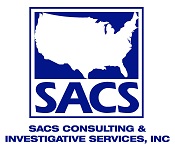Sexual harassment is a critical and pervasive issue in many workplaces today. Understanding what it entails and how to prevent it is crucial for maintaining a healthy, respectful, and inclusive environment. In this write-up, we will delve into what sexual harassment is, who needs to be part of the training, and why this training is so essential for all organizations.
What is Sexual Harassment?
Sexual harassment refers to any unwanted sexual advances, requests for sexual favors, or other verbal or physical conduct of a sexual nature. This can include comments, jokes, gestures, or actions that create a hostile or intimidating work environment.
Sexual harassment is not limited to one gender or one specific scenario. It can occur between coworkers, supervisors, and subordinates, or even between employees and non-employees. Moreover, it can happen in various forms, both subtle and overt, online or offline.
Who Needs to Be at the Sexual Harassment Prevention Training?
- Employees at All Levels: Everyone, regardless of their role or level in the organization, can benefit from understanding what constitutes sexual harassment and how to prevent it. This includes full-time, part-time, and temporary staff.
- Management and Leadership Teams: Those in leadership roles must know how to handle sexual harassment complaints effectively. They also have the responsibility to set the tone for an inclusive workplace.
- Human Resources Professionals: Those who deal with employee relations must be well-versed in handling sexual harassment claims and conducting investigations.
- Contractors and Vendors: Any individuals who are regularly in contact with the organization’s staff should be aware of the sexual harassment policies.
Why is the Training Important?
- Legal Compliance: Many jurisdictions require regular sexual harassment training as part of legal compliance. Failure to comply can result in hefty fines and legal actions.
- Creating a Respectful Workplace Culture: Training helps foster a culture where everyone feels respected and safe. It empowers employees to speak up and supports victims.
- Protecting Company Reputation: The impact of sexual harassment on an organization’s reputation can be devastating. Proper training helps mitigate risks and demonstrates the organization’s commitment to a respectful workplace.
- Enhancing Productivity: Employees who feel safe and respected will likely be more engaged and productive. It also reduces absenteeism and turnover rates.
Conclusion
Sexual harassment prevention training is not just a legal requirement; it’s a moral and ethical obligation. It’s about creating a workplace where everyone feels valued and respected. By understanding what sexual harassment is, ensuring that all relevant parties attend the training, and recognizing why it’s essential, organizations can take a meaningful step towards eliminating this harmful behavior.
SACS Consulting & Investigative Services, Inc. can provide Sexual Harassment Prevention Training for your organization. This training is designed to give employees and managers the tools needed to:
- Learn about the different types of harassment
- Recognize how harassment affects the workplace
- Understand the financial costs of harassment
- Identify solutions and prevention tactics
Contact one of our training professionals to schedule this important training on how to prevent sexual harassment in your organization today!
